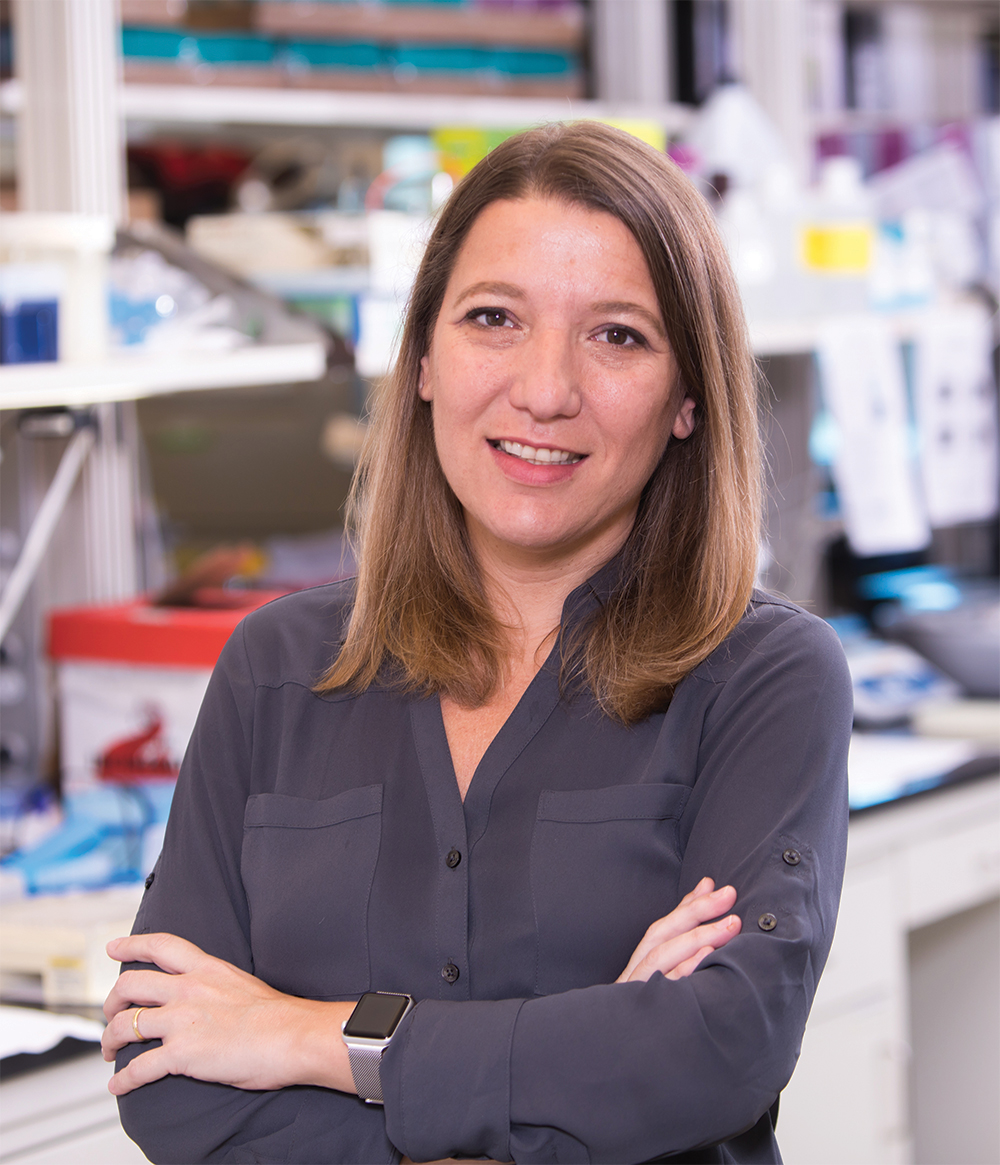Maria Figueroa, M.D., has spent her career studying the blueprint of blood cells to understand how they generate diseases and cancers. Yet two decades into that career, she feels like she’s just getting started.
That’s because her time as a scientist has coincided with revolutionary advances in understanding the human genome and exponential leaps in computing power that are allowing her and her team at Sylvester to truly understand what they’re seeing.

When Dr. Figueroa completed her medical training in Buenos Aires in 2003, the human genome was just being mapped for the first time. Top-of-the-line experts in her field of hematology were running experiments one gene at a time. Collaboration between scientists meant picking up the phone, placing a long-distance call and making revisions to their research by hand.
Now, Dr. Figueroa’s studies use advanced algorithms that examine more than three million locations of the genome at a time as she collaborates virtually in real-time with labs around the world.
“I’m always blown away by what we’re experiencing as scientists,” she says. “The aspects of disease biology that have been uncovered, and the consequences that we’ve had for patients, I consider myself lucky and fortunate to be part of science at this time.”
The result, she hopes, is a deeper understanding of how genes function in blood cells paired with new technologies that will allow scientists to turn them “on” and “off” as needed.
“It’s the beginning of an era,” she says.
Dr. Figueroa uses the example of a computer to describe the effects of aging on the human body. Over time, a computer’s software will become corrupted by viruses and repeated use. The epigenome – which controls and commands a person’s genes – works in much the same way. “Our software gets corrupted, too, as we age,” she says.
Her team’s biggest challenge is finding enough samples to study some of these rare blood cancers. Her work requires a variety of samples to capture the high heterogeneity of these disorders so she can identify patterns and pinpoint genes common among patients suffering from similar diseases. To get that many patient genomes, Dr. Figueroa has established relationships with research institutions throughout the United States and Europe. Currently, she is working with cohorts of 250 patients, but she’s always looking for more.
That level of instant collaboration and the computational power required to study so many genomes at once is a far cry from where she started. Dr. Figueroa remembers being ordered to write her notes in black pen so they could be photocopied. She taught herself how to use Microsoft Excel and her bookshelf is lined with computer programming manuals that she used to learn how to write the algorithms needed for her work. “Now I run a computational lab,” she says with a laugh.